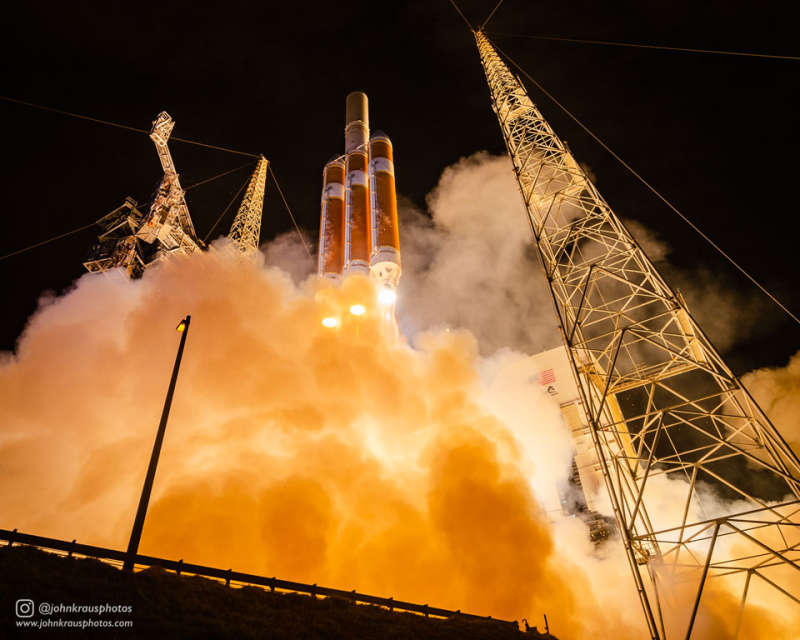Credit & Copyright: John Kraus
Explanation:
When is the best time to
launch a probe to the Sun?
The now historic answer -- which is not
a joke
because this really happened this past weekend -- was at night.
Night, not only because NASA's
Parker Solar Probe's (PSP)
launch window to its
planned
orbit occurred, in part,
at night, but also because most
PSP instruments will operate in the
shadow of its shield --
in effect creating its own perpetual night near
the Sun.
Before then, years will pass as
the PSP
sheds enough
orbital energy to
approach the Sun, swinging past
Venus seven times.
Eventually, the
PSP
is scheduled to pass dangerously close to the Sun,
within 9 solar radii, the closest ever.
This close, the
temperature
will be 1,400 degrees
Celsius
on the day side of the
PSP's Sun shield
-- hot enough to
melt many forms of glass.
On the night side, though, it will be near
room
temperature.
A
major goal of the PSP's mission to the Sun
is to increase humanity's understanding of the
Sun's explosions that impact Earth's satellites and
power
grids.
Pictured is the
night launch of the PSP aboard the
United Launch Alliances'
Delta IV Heavy rocket early Sunday morning.
1999 2000 2001 2002 2003 2004 2005 2006 2007 2008 2009 2010 2011 2012 2013 2014 2015 2016 2017 2018 2019 2020 2021 2022 2023 2024 2025 |
Yanvar' Fevral' Mart Aprel' Mai Iyun' Iyul' Avgust Sentyabr' Oktyabr' Noyabr' Dekabr' |
NASA Web Site Statements, Warnings, and Disclaimers
NASA Official: Jay Norris. Specific rights apply.
A service of: LHEA at NASA / GSFC
& Michigan Tech. U.
|
Publikacii s klyuchevymi slovami:
launch - Sun - zapusk - Solnce
Publikacii so slovami: launch - Sun - zapusk - Solnce | |
Sm. takzhe:
Vse publikacii na tu zhe temu >> | |
